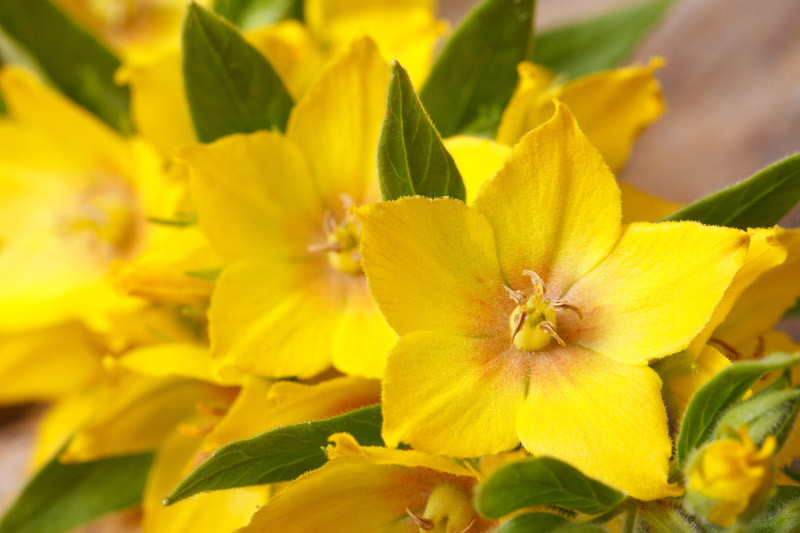Lysimachia
Lysimachia, commonly known as Loosestrife, is a large genus of flowering plants native to various regions, including Europe, Asia, North America, and Australia. The genus contains around 180 species, showcasing a wide diversity of forms.
Size: Lysimachia displays varied growth habits, with species ranging from creeping groundcovers to upright herbaceous perennials. Depending on the species, plants can reach anywhere from a few inches to 3-4 feet (90-120 cm) in height.
Flowers: The flowers of Lysimachia are typically five-petaled, cup-shaped, and can appear in an array of colors, including yellow, white, or purple. The most recognized species, Lysimachia punctata or Yellow Loosestrife, features bright yellow flowers in early to late summer.
Hardiness: Lysimachia is hardy in USDA zones 3-9, with most species preferring moist, well-drained soil. Many species can tolerate various light conditions, from full sun to partial shade.
Pollinators: The blooms attract pollinators, such as bees and butterflies, contributing to biodiversity.
Uses: Uses for Lysimachia vary based on the species’ growth habit. Groundcover types are excellent for suppressing weeds, while taller species add height and color to borders and beds. A key fact about Lysimachia is its fast-growing nature, which, while advantageous for quickly filling in spaces, also necessitates regular management to prevent it from overtaking other plants. Its ability to thrive in difficult conditions, along with its attractive foliage and flowers, make it a versatile choice for various garden settings.
Invasive: Some species, like Yellow Loosestrife, are considered mildly invasive due to their rapid spread.

